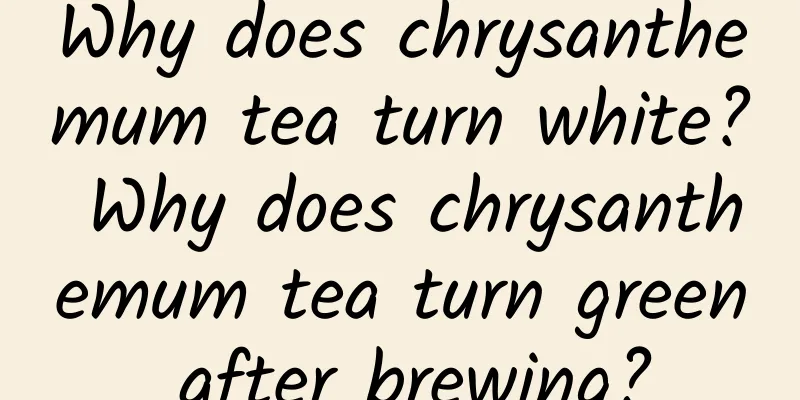Chronic bronchitis worsens in winter, how to deal with it with the combination of traditional Chinese and Western medicine

|
Chronic bronchitis is a common disease. According to incomplete surveys, the incidence of the disease in middle-aged and elderly people over 50 years old is as high as 15%. As the age of patients increases, the incidence of the disease is also increasing. Chronic bronchitis is difficult to cure, recurs repeatedly, and has significant symptoms, which has a serious negative impact on the quality of life of patients. Especially in winter, it is even more difficult for patients with chronic bronchitis. Not only is the disease prevalent, but the condition is also prone to worsening. Many elderly people often experience coughing and wheezing, and taking medicine does not help. So in the face of the worsening of chronic bronchitis in winter, how should Chinese and Western medicine respond and treat it? Let's discuss it together below! The picture comes from the Internet 1. What is chronic bronchitis? Chronic bronchitis is a chronic inflammatory disease that has a negative impact on the bronchi, mainly due to long-term smoking, air pollution, and bacterial and viral infections. Chronic bronchitis can cause bronchial inflammation and airway narrowing, making it increasingly difficult for patients to breathe, especially during physical activity, when symptoms worsen. Common symptoms of chronic bronchitis include coughing, sputum, and wheezing. Coughing is more common, mainly occurring in the morning, and paroxysmal coughs may also occur during sleep; sputum is also common in the early morning, mainly manifested as white foamy sputum, or it may be mucous or serous sputum, and a small number of patients have blood in their sputum. As the course of chronic bronchitis prolongs, patients may develop emphysema, shortness of breath during activity, repeated wheezing, irritability, and sweating. 2. What is COPD? COPD is a type of chronic bronchitis and/or emphysema with airflow obstruction. It is a common, preventable and treatable disease characterized by persistent respiratory symptoms and airflow limitation, which is associated with airway and alveolar abnormalities caused by significant exposure to toxic particles or gases. The symptoms of COPD are dyspnea, chronic cough and/or sputum, which are the most common symptoms of COPD, and may also be accompanied by symptoms such as chest tightness and wheezing. Severe patients often experience fatigue, weight loss and loss of appetite. Among them, smoking and passive smoking, infection, occupational dust and chemicals, and biofuel smoke are all risk factors for COPD. So how is COPD diagnosed? Which groups of people should be screened for COPD? COPD can be diagnosed based on the patient's symptoms, risk factors, pulmonary function tests, imaging tests, etc. Among them, pulmonary function tests are currently recognized as an objective indicator for detecting airflow limitation and are the "gold standard" for diagnosing COPD. It is recommended that the following groups of people should be screened for COPD: those who often cough, sputum, wheeze, chest tightness, shortness of breath and dyspnea, and those who have obvious COPD symptoms after activities; those who are over 40 years old and long-term smokers; and all kinds of workers who are exposed to dust for a long time. 3. Why does the disease occur in autumn and winter? Many patients will lament that chronic bronchitis has been with them for many years, but it will recur in autumn and winter. And many elderly people will be curious, some coughs and asthma occur in spring and summer, why do chronic bronchitis occur in autumn and winter? From the perspective of yin and yang, Chinese medicine believes that spring and summer are yang, and autumn and winter are yin. The yang energy in nature is strong in spring and summer, and the yin energy in nature is strong in autumn and winter. Therefore, in autumn and winter, if the human body has old diseases, it is easy to relapse, which indicates that there is yin and cold evil in the body. As a protracted and difficult to cure disease, chronic bronchitis is easy to get sick when encountering cold air in autumn and winter. The picture comes from the Internet 4. What are the common dangers of chronic bronchitis in the elderly? (1) Reduced quality of life Chronic bronchitis will cause patients to cough and spit for a long time in winter, which will put the body in a state of oxygen depletion and hypoxia, and will have a negative impact on work, life, diet and sleep. It may also lead to recurring attacks of malnutrition diseases, weaken the patient's ability to move, and continuously reduce the patient's quality of life. (2) Lifelong companionship Chronic bronchitis refers to chronic inflammation of the bronchial mucosa, which reduces the motor function of the bronchus and the resistance. Therefore, the disease has the characteristic of recurring. Once the patient catches a cold, the disease will recur. Therefore, in the cold winter, the number of patients with chronic bronchitis continues to increase. If active treatment measures are not taken, it may lead to lung infection, and coughing and sputum will accompany lifelong. (3) Reduced lung function If you suffer from chronic bronchitis and do not take timely intervention and treatment measures, it is easy to affect lung function, causing it to continue to decline. After it declines to a certain level, complete breathing will become increasingly difficult, and there will even be a feeling of suffocation. These fibers will produce mucus. If the mucus is not discharged from the body in time, it will block the patient's respiratory tract and increase chest tightness. As the disease progresses, you will feel short of breath in your daily life and develop chronic respiratory failure, arterial hypertension and chronic cor pulmonale. The picture comes from the Internet 5. How does Western medicine treat chronic bronchitis? (1) Supportive treatment For example, doctors will give oxygen therapy to alleviate the problem of dyspnea, and with reasonable nutritional support and necessary rest, the patient's resistance can be improved. In addition, respiratory rehabilitation exercises, home oxygen therapy, vaccination, and airway intervention are also very important. (2) Drug treatment Commonly used drugs for drug treatment include bronchodilators and inhaled steroids, which can dilate the bronchi, reduce airway obstruction, and relieve dyspnea. Common bronchodilators include short-acting and long-acting β2 receptor agonists. Short-acting drugs such as salbutamol can urgently relieve the patient's acute attack period; long-acting drugs such as salmeterol can control the symptoms of the disease for a long time. Inhaled steroids are anti-inflammatory drugs that reduce inflammatory reactions, prevent airway stenosis and excessive sputum; budesonide and others can also relieve airway inflammatory reactions. If the cause of chronic bronchitis is bacterial infection, doctors generally choose to give antibiotics, such as amoxicillin-clavulanic acid, azithromycin, etc., to control the infection problem and alleviate the symptoms of the disease. The use of mucolytics is also common, such as bromhexine, which can promote the dilution and removal of sputum and prevent blockage problems. In order to improve the patient's body resistance, Western medicine will also give interleukin receptor antagonists to control the immune response and reduce inflammation and airway constriction. The picture comes from the Internet (3) Surgical treatment Lung volume reduction surgery and lung transplantation are often used to treat severe COPD. 6. How does traditional Chinese medicine treat chronic bronchitis? Traditional Chinese medicine believes that "phlegm can be divided into cold and hot, the body can be divided into yin and yang, deficiency and excess, and the disease can be distinguished into symptoms and root causes, slowness and urgency". The condition of patients with chronic bronchitis is more complicated, so it is necessary to distinguish the severity of the symptoms and root causes during treatment, and choose a reasonable prescription according to the stage and nature of the disease. Although there are many symptoms of chronic bronchitis, the main symptoms are cough, phlegm, and wheezing, so the treatment is mainly to stop coughing, resolve phlegm, and relieve wheezing. The following is the dialectical treatment of chronic bronchitis: (1) Phlegm and turbidity blocking the lungs - Erchen Decoction combined with Sanzi Yangqin Decoction (2) Lung Qi Deficiency Syndrome - Bufei Decoction (3) Phlegm-heat in the lungs - Yuebi Jia Banxia Decoction (4) Lung and spleen qi deficiency syndrome - Shenling Baizhu San (5) Lung and kidney qi deficiency syndrome: Buxu decoction combined with Shenge powder In addition to treatment with Chinese medicine prescriptions, you can also choose prevention and treatment methods that treat both internal and external factors. Take medicines or medicated foods that warm the qi and replenish the blood, strengthen the body and nourish the essence. Take acupoint plasters, acupuncture, acupoint injections, infrared physiotherapy and other methods to strengthen the body, dispel evil, warm the meridians, dispel cold and remove dampness, and regulate the balance of yin and yang in the human body. In addition, Chinese medicine fumigation and massage are also very effective. Chinese traditional sports such as Ba Duan Jin, Tai Chi, Liu Zi Jue, and breathing exercises are used to adjust the body shape, breath, and mind, which are in line with modern medicine's physical training, breathing training, and emotional adjustment, and have a definite positive significance in COPD rehabilitation. The picture comes from the Internet 7. What are the advantages of combining traditional Chinese and Western medicine to treat chronic bronchitis in the elderly? The combination of Chinese and Western medicine can bring out the advantages of both treatment methods and provide a more comprehensive and personalized treatment plan. Western medicine can effectively control inflammation and alleviate the patient's disease symptoms in a targeted manner. Combined with Chinese medicine, it can regulate qi and blood, strengthen the body, improve the patient's physical condition, and bring out better results. For example, while taking Western medicine, you can choose to massage the patient's chest and back to restore airway patency and improve breathing difficulties. In short, for stubborn chronic bronchitis in winter, the combination of Chinese and Western medicine can promote recovery from the disease and improve physical fitness. The effect is excellent and can be used as a reference. |
<<: Surprising discovery! China's obesity map is released, people in these places should be alert!
>>: Have you eaten your first strawberry of winter? How should you eat it?
Recommend
Should I take folic acid?
Pregnant mothers often supplement various nutrien...
Will Caesarean Section Kill the Third Child?
Nowadays, cesarean section is becoming more and m...
Why is liver cancer late stage and silent? What is the key to early detection?
Liver cancer is a ferocious tumor that can cause ...
What is the cause of leucorrhea with white fishy smell?
The abnormality of leucorrhea is that the color c...
Why is my lower body always wet?
For women, there are always some minor troubles i...
What does it mean when I have dark red discharge during pregnancy?
Many mothers will experience various physical con...
What to do if a pregnant woman has oral swelling and pain
If a pregnant woman feels swelling and pain in he...
What causes women’s lower abdominal pain and bloody vaginal discharge?
Leucorrhea is a natural physiological phenomenon ...
Causes of vulvar itching and growths
Vulvar itching is a very common gynecological dis...
Can pregnant women eat crab roe buns?
Crab roe soup dumplings have been recorded in man...
What is the reason for the strong smell of urine?
What causes strong smell of urine? Fresh urine ha...
Is it painful to have a medical abortion?
If medical abortion is not complete, you will nee...
Can I open the window for ventilation when I turn on the air conditioner? What is the problem of the air conditioner leaking water inside the unit?
The weather is getting hotter and hotter, and peo...
The most effective way to protect the fetus
Many women will have unstable fetuses during preg...
Tremella and cabbage can nourish yin and moisten dryness
After autumn, the hot and unbearable weather is c...









